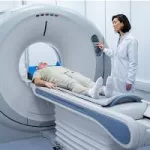A new study reveals a unique genetic mutation in dogs that may contribute to antimicrobial resistance in E. coli, suggesting dogs as effective models for studying human infections.
In a groundbreaking discovery, researchers have identified a mechanism in dogs that may render multiple antibiotic classes ineffective against E. coli, the leading cause of death due to antimicrobial resistance worldwide. The findings, published today in the journal Applied and Environmental Microbiology, shed light on a unique genetic mutation that could pave the way for novel therapies and enhance antibiotic stewardship in veterinary practices.
Genetic Adaptations in E. coli
The research team analyzed over 1,000 genomes of the resistant E. coli pathogen isolated from sick dogs. They discovered a set of genes undergoing evolutionary selection, which revealed they were becoming obsolete and losing function. However, this loss of function might have inadvertently created conditions that trap antibiotics in E. coli’s cell membrane, preventing them from entering the bacteria.
“I like to think of it as a serendipitous event of evolution, because it appears that these capsule proteins have been repurposed to trap antibiotics,” said Laura Goodman, assistant professor at Cornell University and the study’s senior author. “We’re looking at a loss of function mutation that is potentially conferring a new phenotype unrelated to its original purpose.”
Importance of Dogs in Antimicrobial Resistance Research
This study not only aims to improve canine health but also highlights the significance of dogs as models for human health. Dogs tend to share similar E. coli strains with their owners and are treated with similar antibiotics. Two classes of antibiotics – third-generation cephalosporins and quinolones – are critically important, according to the World Health Organization. Overuse of these drugs in veterinary medicine raises concerns among clinicians and public health experts, despite no legal restrictions on their use in dogs. Efforts are ongoing to promote good stewardship of these treatments.
Linking Canine and Human Health Through Genetics
The researchers hypothesized that mechanisms affecting these classes of drugs in dogs would also be significant for humans. “When we looked for this genetic variant in human infections, we found many of them in hospital and public surveillance data of E. coli and Klebsiella infections in people,” Goodman said. This connection suggests potential new drug targets that could prevent the pore in the E. coli membrane channel from closing, allowing antibiotics to freely enter the cell.
Enhancing Surveillance and Treatment Strategies
The study stands out by providing a mechanistic understanding of antibiotic resistance and filling crucial gaps in surveillance for human E. coli infections. It utilized leftover clinical samples from dogs collected as part of routine care, showcasing an innovative approach to linking animal and human health research.
Reference:
“Evolutionary genomic analyses of canine E. coli infections identify a relic capsular locus associated with resistance to multiple classes of antimicrobials” 16 July 2024, Applied and Environmental Microbiology. DOI: 10.1128/aem.00354-24
The study was supported and performed in collaboration with the U.S. Food and Drug Administration’s Veterinary Laboratory and Response Network.












